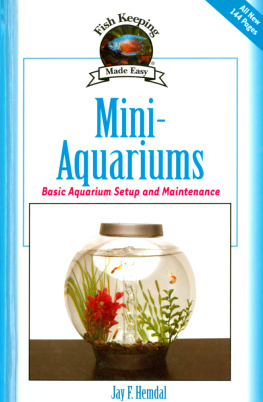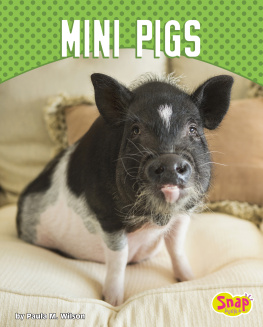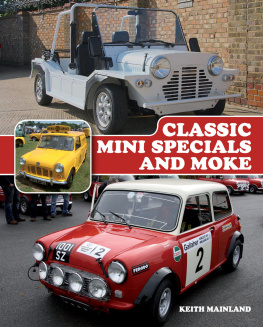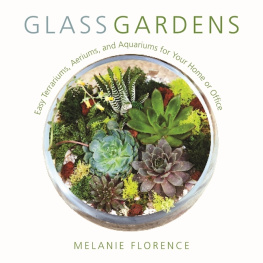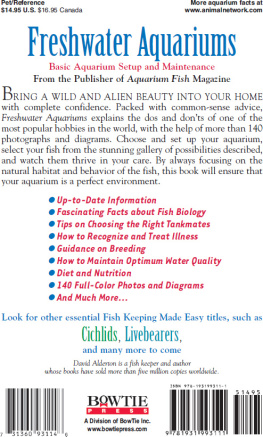

Karla Austin, Director of Operations and Product Development
Nick Clemente, Special Consultant
Barbara Kimmel, Editor in Chief
David Lass, Consulting Editor
Joe Bernier, Designer
Indexed by Melody Englund
Copyright 2008 by I-5 Press
All rights reserved. No part of this book may be reproduced, stored in a retrieval system, or transmitted in any form or by any means, electronic, mechanical, photocopying, recording, or otherwise, without the prior written permission of I-5 Press, except for the inclusion of brief quotations in an acknowledged review.
Library of Congress Cataloging-in-Publication Data
Hemdal, Jay F., 1959
Mini-aquariums : basic aquarium setup and maintenance / by Jay Hemdal.
p. cm. (Fish keeping made easy)
Includes bibliographical references and index.
ISBN 978-1-933958-40-8
eISBN 978-1-620080-08-5
1. Aquariums. I. Title.
SF457.3.H46 2008
639.34dc22
2007044681
I-5 Press
A Division of I-5 Publishing, LLC
3 Burroughs
Irvine, California 92618
Printed and bound in Singapore
16 15 14 13 12 11 10 09 08 1 2 3 4 5 6 7 8 9 10
I would like to extend my sincere appreciation to all of the people who helped me with this effort. I am grateful to my wife and son for their patience as I wrote in my home office night after night. My employer, the Toledo Zoo, has always been supportive of my writing efforts. The aquarium staff members of the Toledo Zoo have always been eager to help with my projects and have offered many excellent suggestions over the years. Finally, I would like to thank my parents, John and Sally, who nurtured my early awareness of aquatic life despite having absolutely no interest in the topic of home aquariums themselves!
Preface
T his book describes home aquariums that contain 8 gal (30 L) or less of water, known as mini-aquariums. After many years of keeping both small and large home aquariums, I set up my first true mini-aquarium on a 4 in. x 30 in. (10 cm x 76 cm) marble windowsill in 1981. This homemade marine aquarium held about 1 gal (6 L) of seawater and was used to grow Caulerpa algae. During the ensuing twenty years, I became a strong proponent of the viability of small aquariums. Over the past few years, I have seen a terrific increase in the interest in these small aquariumsboth freshwater and marine. Having worked with aquariums that ranged in capacity from 6 oz to 90,000 gal (340,500 L), I decided that 8 gal (30 L) was a natural cutoff between a mini-aquarium and those aquariums, such as the ubiquitous 10 gal (38 L) aquarium, that are just considered small. Mini-aquariums have specialized requirements that make their care a bit different from that of larger aquariums. Unfortunately, until recently, aquarists setting up these types of aquariums did not have adequate resources to help them. That is why the editors at I-5 Press decided that a comprehensive book on mini-aquariums was needed.
This was a truly entertaining book to write. I hope you will enjoy reading it as much as I enjoyed researching and writing it.
What exactly is a mini-aquarium? Most public aquarists consider anything with a capacity of less than 100 gal (378 L) to be small. For the home aquarist, the term small usually describes a tank less than 40 gal (151 L) in capacity. Taking this one step further, in this book a small aquarium is defined as one holding less than 20 gal (76 L), a mini-aquarium as one holding 8 gal (30 L) or less, a micro-aquarium as one holding less than 2 gal (8 L), and a pico-aquarium as one holding less than 1 gal (4 L). Nano-reef is a commonly used term for a small marine aquarium with corals, usually less than 20 gal (76 L) of water.

A 1 1/2 gal (6 L) micro-aquarium has been set up as a reef tank; however, marine fish will need to be chosen carefully for an aquarium this small.
F ully functioning mini-aquariums have become increasingly popular over the past ten years. Why the sudden popularity of mini-aquariums? Certainly, cost is a major factor in their attractiveness. Even a custom mini-aquarium with full life-support equipment is within the budget of most people, and simple mini-aquariums can be set up that cost less than fifty dollars, complete with fish. For some people, the fact that the maintenance needs of mini-aquariums are so much easier to handle than those of a regular aquarium is very appealing. Large aquariums can require hours of maintenance work every week, while a water change can be performed on a mini-aquarium in a matter of a few minutes.
Mini-aquariums also present a novel approach to aquariums that many people find intriguing. Just as people are interested in bonsai trees, people are fascinated with aquariums that model the natural environment but on a miniature scale. Finally, there is the challenge with advanced mini-aquariums (usually marine) of being able to successfully maintain a stable miniature environment for several years.

The hobby of bonsai (growing, trimming, and shaping small trees in pots) attracts people for many of the same reasons that mini-aquariums do. The type of bonsai shown here is of the smallest variety, called mame.
Mini-aquariums are popular with novice and advanced aquarists, young and old alike. Study the techniques in this book and apply some common sense, and you can develop your own successful mini-aquarium as well.
Contents
CHAPTER 1 | Choosing a Mini-Aquarium |
Statements such as aquariums larger than 40 gal [151 L] are easiest to care for and larger aquariums are inherently more stable than small tanks are so entrenched in the hobby that it has become common knowledge even among people who have never owned an aquarium. Few people challenge such assertions, but based on the success people are having with mini-aquariums, it is obvious that these statements are not always true.
P erhaps the most compelling reason given for recommending large aquariums over small ones is that a large tank should inherently be more stable than a small one in terms of water chemistry. It is assumed that the larger tank provides the specimens with a more stable environment. This is true, however, only if the weight of the animals per volume of water in a small tank exceeds the ratio found in a larger tank. If the ratio of animal weight (more correctly, the biomass) to water volume is the same (and assuming the two tanks have equally efficient filters), the two tanks will have equal biological stability. The key to success, then, is to stock a small tank to the same density as a larger tank and to take into consideration the potential adult sizes of the animals you intend to add. The crux of the problem is that many aquarists tend to add just one more fish.

Mini-aquariums can work well for a wide variety of organisms. This baby seahorse was raised in a mini-aquarium and is quite content using an artificial plant as a hitching post.
Next page
